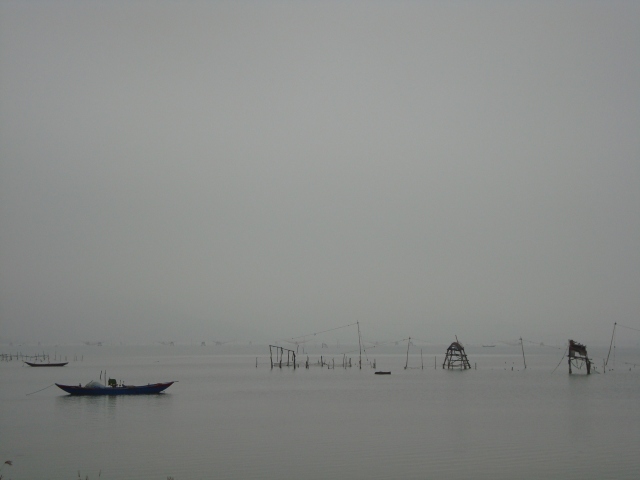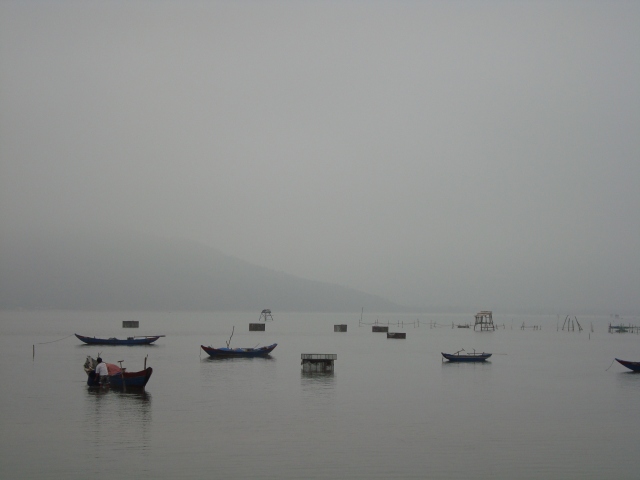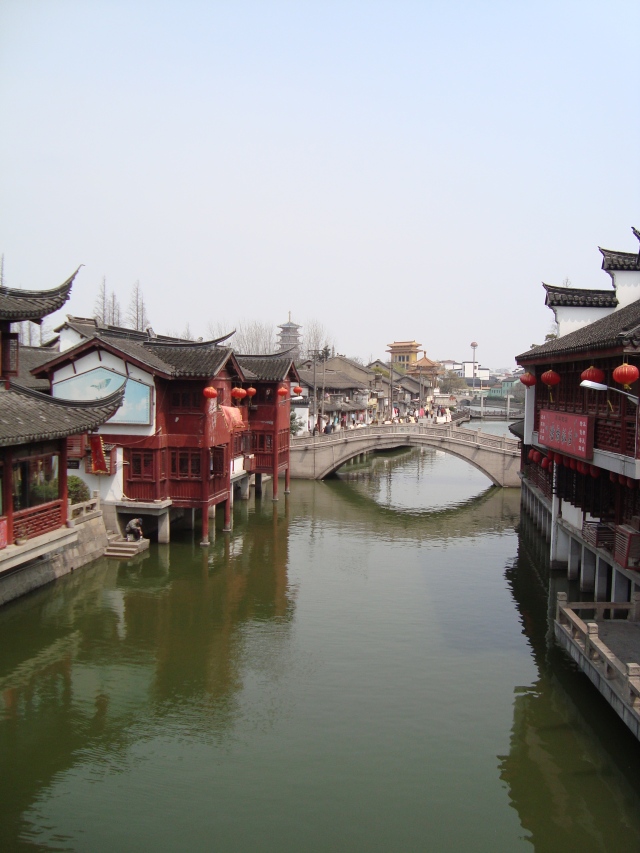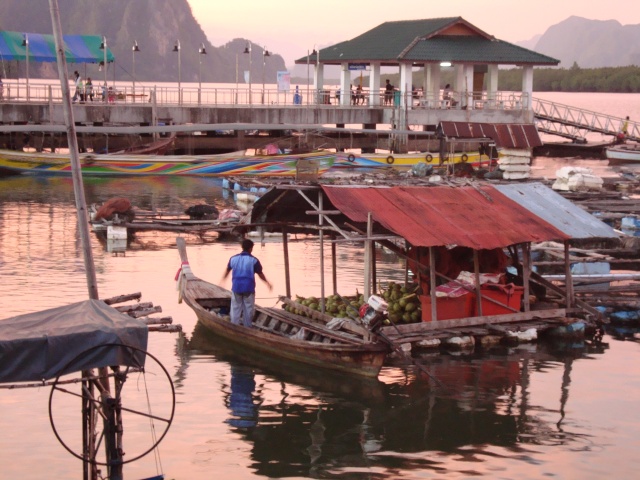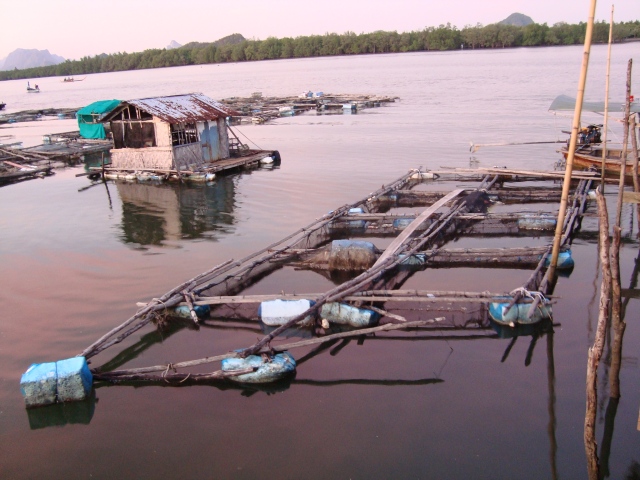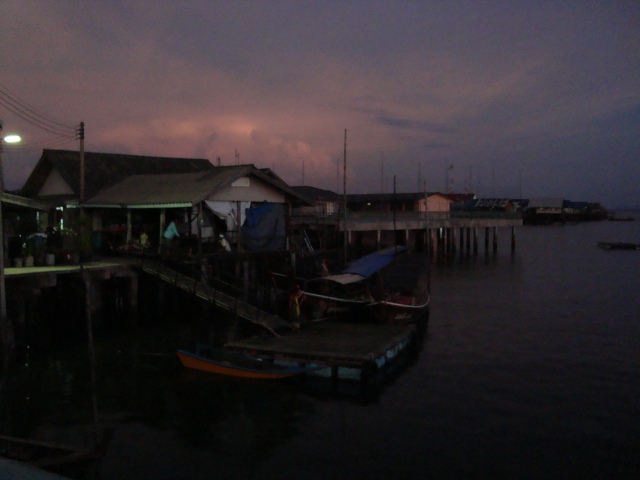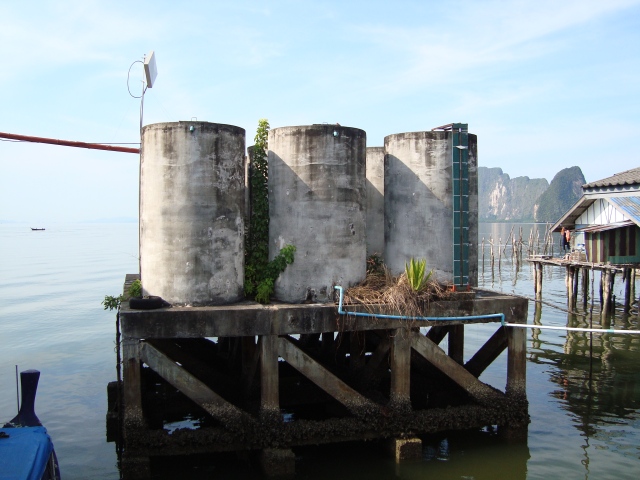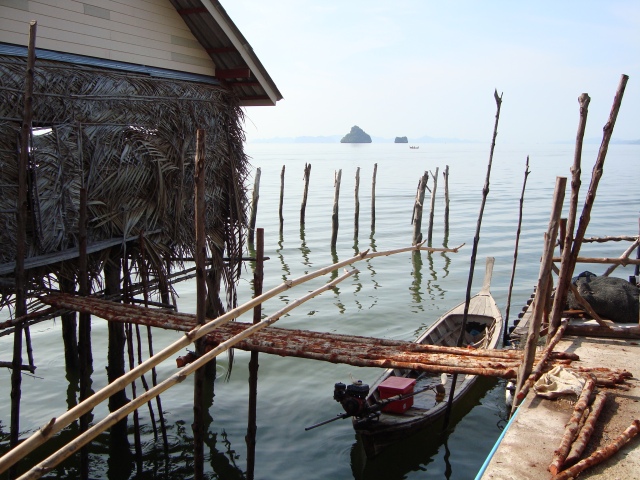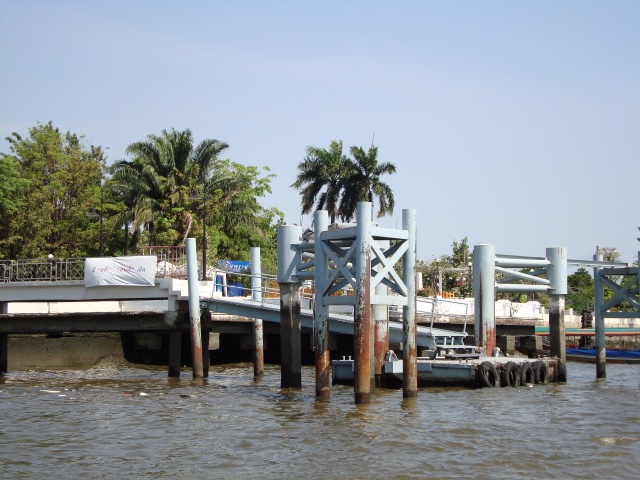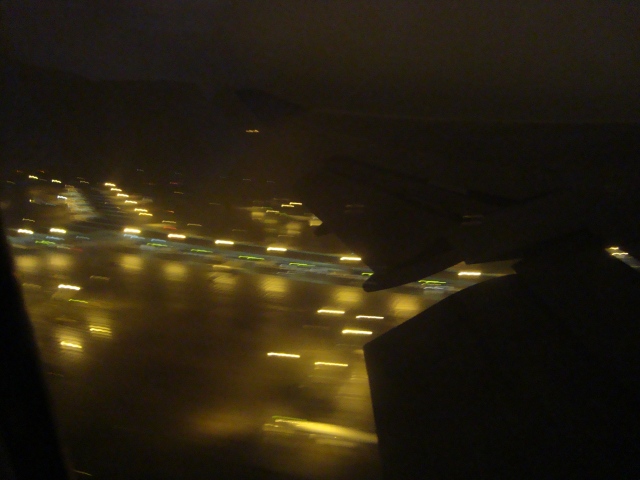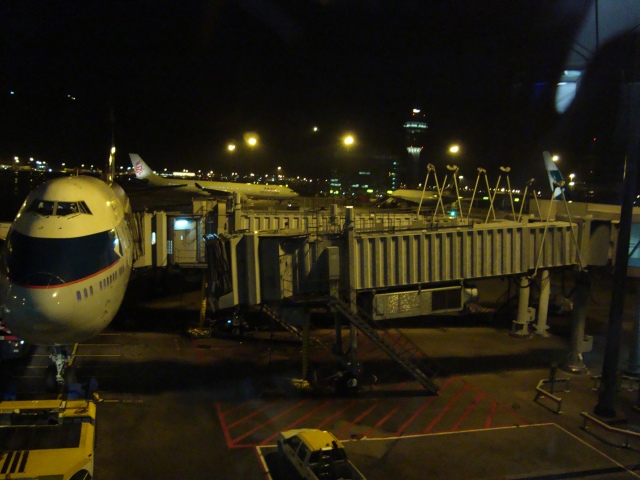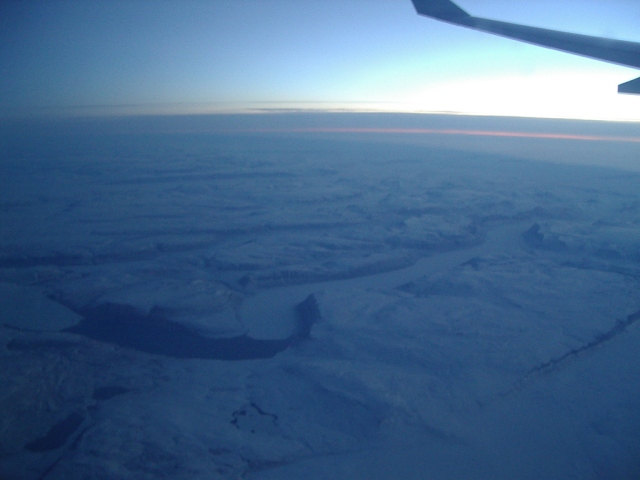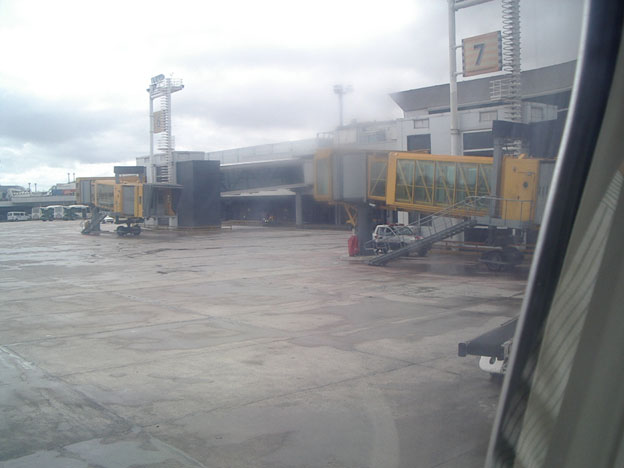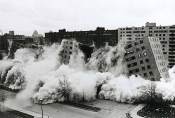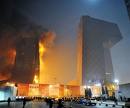water is a pervasive condition and yet the supply of potable water is limited. human occupation has always necessarily been related to a close proximity to water sources. this proximity has shaped traditional communities in ways that are sometimes surprising, disclosing a series of strategies for considering future developments. what does tradition tell us? what are the relationships between human occupation and services required to sustain this occupation? these questions may be asked by subsequent posts, but the photos included below suggest ways in which to understand the precedents for this line of questioning.
New Beginnings
Airports
Airports are key moments where the local is erased in favor of the global. It is the distillation of a space dominated by logos, by machinery, by artifice, by substitution. The artifacts of the airport experience are those of disengagement amid a monumental mechanized landscape. They exist as islands, clearly delineated at their boundaries. Like modern city-states. Here the ancient city wall is replaced by a securitized buffer zone, populated by metal detectors, security cameras, limitations on access and parking. Within their walls a new society flourishes, one built on global brands, global experiences, a population that exists outside of the terra firma surrounding them and instead occupy the terra artifice of telecommunications networks, autopilot controlled aircraft, and scripted experiences.
charting the urban future – part 2
a few moments along the way to a storyline for the near future
1. http://www.inhabitat.com/2009/10/28/energy-generating-pavement/

2. http://hardware.slashdot.org/article.pl?sid=08/12/11/1853217
When the East Japan Railway Company (JR East) decided to invest in alternative energy sources, it only had to look to its users for the perfect source of energy. Recently the company decided to update their Tokyo Station with a revolutionary new piezoelectric energy generating floor. The system will harvest the kinetic energy generated by crowds to power ticket gates and display systems
3. http://www.msnbc.msn.com/id/20201266/
‘Crowd Farms’ could offer alternative energy

4. [PDF]
Kinetic Energy Storage and Kinetic Energy Storage and Power …
VG 12973. Kinetic Energy Storage and. Kinetic Energy Storage and. Power Generation and. Power Generation. Bob Hebner. University of Texas …
gcep.stanford.edu/pdfs/iq9bO…/Hebner-20071102-GCEP.pdf
http://www.humboldt.edu/~ccat/pedalpower/hec/hpeg/index.html
http://www.ecogeek.org/component/content/article/775

Especially since there’s probably a million people trying to burn off calories on treadmills all over the world at this very moment. And all those calories they’re burning are pretty much going to waste.
Well, almost all. There are actually a couple of gyms across the world that are converting those burned kilocalories into usable kilowatts. TreeHugger recently wrote
But can this really help? Is it worth attaching generators to millions of treadmills and elliptical machines all over the world?
I think it may be time for some quick calculations.
50 watts per adult * 200 million adults in America * 1 hour of exercise per day * 1 billion watts per gigawatt * 365 days per year = 3650 gigawatt hours per year!
Solving the obesity epidemic and the energy crisis at the same time. That’s what I’m talkin’ about!
The added cost to the treadmills would likely be a lot less than putting solar panels all over the roof of the gym and the power would be generated exactly when the establishment needs it. I can’t imagine this wouldn’t pay for itself relatively quickly.
http://www.treehugger.com/files/2007/06/hong_kong_gym_h.php
Build a pedal powered generator

David writes – “Every morning, I pedal to generate electricity. The Pedal Generator charges batteries, that run an inverter, that produces 110v AC, that powers LED lights, the monitor on my computer, and many other small battery-powered things. It is the most inspiring workout you can imagine. “ [via] – Link. There are plans available for purchase on the site for $50 – if anyone built one of these post on up in the comments.
7. lifecycle product design
http://www.nreliu.com/work/rickshaw-bags/
8. urban infrastructure
Queens Plaza: Infrastructure Reframed
June 24, 2009 at 12:12 pm · Filed under Artificial Landscapes, Diversity, Great Streets, Infrastructure, Investment, Landscape, Place making, Public Life, Public Space, Street Furniture, Urban Design, Visualization

The Queens Plaza Bicycle and Pedestrian Landscape Improvement Project transforms the tangle of urban infrastructure cutting through Long Island City from a harsh, disorienting industrial maze into a lush, navigable landscape, a gateway to Long Island City that organizes various flows and scales while providing a refuge for residents, workers and the road-weary. The urban and landscape design unites the surrounding neighborhoods and restores the connection between the city and the river. The project spans 1.3 miles, revitalizes JFK Park and connects it to the dramatic water’s edge below the Queensboro Bridge.
http://urbanhacking.hyperradiant.net/
9. local food

One common lament about local food is that there simply isn’t enough of it. The best part about it — that it’s different in every foodshed, location to location — also means that the supply can have a hard time keeping up with demand. That’s especially true when it comes to larger, more dense urban centers, where locavores greatly outnumber farms and farmers.
The Rise of Urban Farming Worldwide
Posted by Big Gav in agriculture, urban farming
There’s something poignant about this photo of a former bank vault in Tokyo that’s been converted into a semi-automated urban farm. In Japan, urban agriculture is not only making good use of spaces where money used to be, it’s also compensating for the traditional farmers that its shrinking population is shedding.
From Mumbai to Manila, cities in emerging economies are looking to urban farming to bolster job growth, improve food security and make more productive use of organic waste. The surprising role model for off-farm farming is Havana, Cuba where 90% of fresh produce supply is grown in the city. Nationwide, urban farming has created 350,000 jobs for Cubans and has boosted the average caloric intake from 2,323 per Cuban per day in 1993 to 3,547 today. Apparently, one main cause of this shift in food sourcing is the inefficiency of state-owned farms.
China is also exhibiting how to industrialize the trend on a massive scale. The Modern Agricultual Science Demonstration Park in Beijing shows how a farm in the city can provide vegetation as well as aquaculture and livestock. Don’t expect an organic meal to come from here though. An entire section is dedicated to plant cloning and seed hacking.
10. public display systems
http://www.livinglightseoul.net/05.htm

the questions of energy generation, food generation, graphical display, human understanding and use, and relationship between disparate devices for understanding and reacting to this urban environment of devices is key to the elements i’ve placed here.
charting the urban future – part 1
these are an attempt to jumpstart a visual catalog of items that i believe have a relevance to the immediate urban future. some are repeats from previous posts, others are completely cribbed from other journals and blogs i find fascinating. my concept is to provide a fairly un-edited stream of consciousness from the internet in terms of relevant near future artifacts:

http://www.vimeo.com/channels/brianlevibowman#4243175
http://efgh-ny.com/ (Hedgehog and Sweat Equity)

crotchrock by a few students at cranbrook a few years ago (i just like the way it has a design imagery similar to nautilus equipment)
The City and its Flooded Double from BLDGBLOG
 [Image: “Aqualta: 5th Avenue & 35th Street, NYC,” by Studio Lindfors; view larger].
[Image: “Aqualta: 5th Avenue & 35th Street, NYC,” by Studio Lindfors; view larger].
Studio Lindfors—of Cloud Skippers and Cloud City fame—have released a stunning new series of images, published here on BLDGBLOG for the first time, in which we see New York City and Tokyo after a catastrophic flood.
 [Image: “Aqualta: Garment District, NYC,” by Studio Lindfors; view larger].
[Image: “Aqualta: Garment District, NYC,” by Studio Lindfors; view larger].
Called Aqualta, the project is an exquisitely produced tour of a hydrologically transformed metropolis. Gondolas float through a still-blazing Times Square; people fish atop gravel banks that have built up beside inundated skyscrapers; and an aerial network of blimps, catwalks, pedestrian skyways, and cable cars passes and sways above the Venetian streets.
I can’t emphasize enough how beautifully detailed the images are; I’ve put them into a Flickr set for closer viewing. They knock me out.


 [Images: “Aqualta: Times Square at Night, NYC,” “Aqualta: Roppongi Minato-ku, Tokyo,” and “Aqualta: W. 29th Street & Broadway, NYC” by Studio Lindfors].
[Images: “Aqualta: Times Square at Night, NYC,” “Aqualta: Roppongi Minato-ku, Tokyo,” and “Aqualta: W. 29th Street & Broadway, NYC” by Studio Lindfors].
Similar in spirit to Squint Opera’s earlier look at a Flooded London, Aqualta is hard—if not impossible—to separate from the context of melting ice caps and global climate change. However, it deserves visual attention in its own right, even outside such politically charged discussions.
Far from stoking fear about a coming catastrophe, both of these projects—Studio Lindfors and Squint Opera—offer a vision in which people, and the cities they live in, have learned to adapt to the overwhelming presence of water. Indeed, Times Square, in Studio Lindfors’s vision, is radiant, markedly improved by the reflective waters that now flow through it. Of course New York should be at least partially flooded, one might be tempted to think; of course the future of urban planning involves designing with water.
 [Image: “Aqualta: Shibuya Station, Tokyo,” by Studio Lindfors; view larger].
[Image: “Aqualta: Shibuya Station, Tokyo,” by Studio Lindfors; view larger].
In fact, there’s a memorable, if brief, scene in Steven Baxter’s recent novel Flood—a surprisingly thought-provoking book about a global flood that, in Wikipedia‘s words, “even covers Mount Everest in 2052, submerging all landmasses on Earth”—where we see a character scraping barnacles off the rocky sides of New York high-rises after the city has been lost to the sea. South Manhattan has been transformed into a tidal world of mussels, clams, and seaweed—and, even then, the waters continue to rise. But if that novel were ever to be adapted for film, I’d unhesitatingly suggest that Studio Lindfors’s visual firepower be snapped up for art direction and set design.
 [Image: “Aqualta: 5th Avenue & 53rd Street, NYC,” by Studio Lindfors; view larger].
[Image: “Aqualta: 5th Avenue & 53rd Street, NYC,” by Studio Lindfors; view larger].
The architects got in touch after reading the urban premise of DJ /rupture‘s new album with Matt Shadetek, mentioned a few days ago; in an interview with New York magazine, /rupture says the new mix “paints a picture of New York 40 years in the future, where the water line is at the fourth story of buildings and the rich people are dry in the Catskills. Kids are making music on their cell phones and grilling octopi. So, it’s postapocalyptic, but not necessarily grim.”
Again, check out the images in more detail.
Electrical Folklore also from BLDGBLOG
 [Image: Barry Underwood, courtesy of Johansson Projects].
[Image: Barry Underwood, courtesy of Johansson Projects].
The Johansson Projects gallery over in Oakland is hosting an exhibition of photographs by Barry Underwood, called Earth Engines; the show also includes a series of sound installations by artist Oliver diCicco.
 [Image: Barry Underwood, courtesy of Johansson Projects].
[Image: Barry Underwood, courtesy of Johansson Projects].
On the one hand, Underwood’s photos document an obvious artistic intervention into the landscape, in the form of embedded and highly colorful light sources smuggled into unlikely situations; but, on the other, these images imply that Underwood has, in fact, captured a previously unrecorded natural phenomenon, an unidentified electrical presence in the trees. In other words, like some battery-powered variation on “Pickman’s Model” by H.P. Lovecraft, these earth engines could, under the right circumstances, perhaps even be naturally occurring: glowing piles of uranium, say, or strange new bioluminescent creatures, unknown to science till now.


 [Images: Barry Underwood, courtesy of Johansson Projects].
[Images: Barry Underwood, courtesy of Johansson Projects].
The juxtapositions of spectacular landforms and immersive, forested environments with these subtle networks of lighting effects—and the accompanying idea that there might be a power source shining away somewhere deep within the natural world—even brings to mind Archigram’s design for a deep-woods electrical outlet disguised inside an artificial log.
Of course, I’m also reminded of an old Paul Simon song: These are the days of lasers in the jungle.
 [Image: Barry Underwood, courtesy of Johansson Projects].
[Image: Barry Underwood, courtesy of Johansson Projects].
So is it a Will-o’-the-Wisp or stray camper’s light? A radioactive spill or an art project?
Produce a catalog of these sorts of strange lights seen in the woods, throughout history, and you’ve got a new field of study: electrical folklore.
 [Image: Barry Underwood, courtesy of Johansson Projects].
[Image: Barry Underwood, courtesy of Johansson Projects].
In any case, the show opens up this weekend, on November 21; stop by the gallery’s website for more details.
Aqueous also from BLDGBLOG
 [Image: From Amphibious Architecture; photo by Chris Woebken].
[Image: From Amphibious Architecture; photo by Chris Woebken].
New York architects The Living, mentioned in an earlier post, are behind another noteworthy project: Amphibious Architecture. This one, completed in collaboration with xClinic, Natalie Jeremijenko, and many others, and commissioned by the Architectural League for the recent exhibition Toward the Sentient City, is an environmental monitoring station—a subtle filigree of colored lights—floating in the rivers of New York.
 [Image: From Amphibious Architecture; photo by Chris Woebken].
[Image: From Amphibious Architecture; photo by Chris Woebken].
As such, it is more or less a direct outgrowth of their earlier project River Glow.
- Amphibious Architecture is a floating installation in New York’s waterways that glows and blinks to provide an interface between life above water and life below… Two networks of floating interactive tubes, installed at sites in the East River and the Bronx River, house a range of sensors below water and an array of lights above water. The sensors monitor water quality, presence of fish, and human interest in the river ecosystem. The lights respond to the sensors and create feedback loops between humans, fish, and their shared environment. An SMS interface allows citizens to text-message the fish, to receive real-time information about the river, and to contribute to a display of collective interest in the environment.
The idea of text-messaging fish adds a dream-logic to this project that I find intensely enjoyable. A man lost somewhere in the middle of the Atlantic Ocean who retains his sanity only by texting Leviathan. Screenplay by Ernest Hemingway.



 [Image: From Amphibious Architecture; photo by Chris Woebken].
[Image: From Amphibious Architecture; photo by Chris Woebken].
Check out more of The Living’s work on their website—and spend a few moments, while you’re at it, with the decisively trans-species design work of their collaborator, Chris Woebken. Woebken’s well-known Animal Superpowers project is particularly fantastic.


[Images: from The Emperor’s Castle by Thomas Hillier].

from CJ LIM (whose books SINS and Devices should be seen as incredible precedents)
also Smout Allen
http://pruned.blogspot.com/2008/10/traces-and-trajectories.html
craig hodgetts from “ecotopia”
http://sinkingcities.com/2009/01/green-%E2%80%9970s-flashback-with-smiles-and-shades-of-blue/
also David Greene, LAWUN project by Archigram
http://www.purselipsquarejaw.org/2004/05/on-mobile-cities-archigram-invisible.php
http://www.designundersky.com/dus/2009/3/19/locally-available-world-unseen-networks.html
the question one might ask is, what ties these elements together? if i were to highlight a particular conceptt hat strings them together so far, it is that they begin to create a story of a near future that takes a particular performance criteria of contemporary life and pushes it along a line of logic into a point in the near future where it begins to assert it’s independence.
the future around us
http://www.livinglightseoul.net/05.htm

the living
http://www.ucl.ac.uk/news-archive/library/images/balloons1.jpg

cj lim
http://www.flickr.com/photos/arandalasch/3192718680/

aranda/lasch
http://emergentarchitecture.com/projects.php?id=25

emergent architecture
reflexive utopias
with an abundance of blind utopian visions littering the history of humanity, the idea that ideals can be realized is often viewed with considerable skepticism. sadly the role of utopia is typically much like that of developing visions of the future, a fun, yet extremely unproductive exercise.
but why? history is also full of ideas influencing and re-directing the course of events, industries, methods of making.
and what becomes of these utopian moments within the everyday? they become fragments, glimpses of an ideal world that was in the making.

caxambu, brazil (photo by author)

sao paulo, brazil (photo by author)
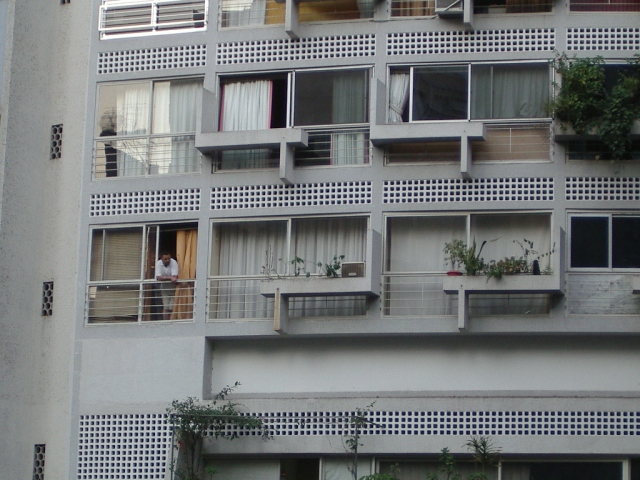
sao paulo, brazil (photo by author)
dispossessed utopias
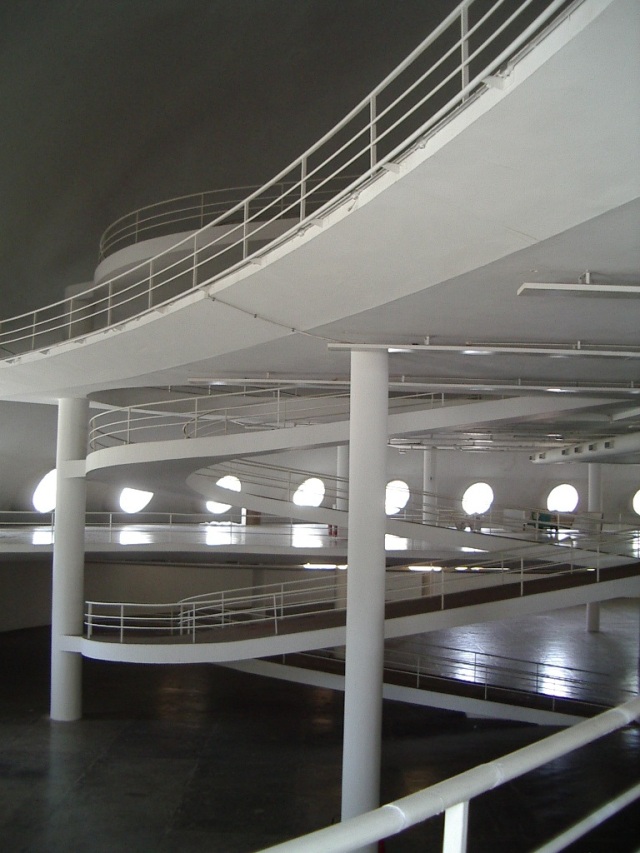
oscar niemeyer, sao paulo (photo by author)

government building, salvador, brazil (photo by author)
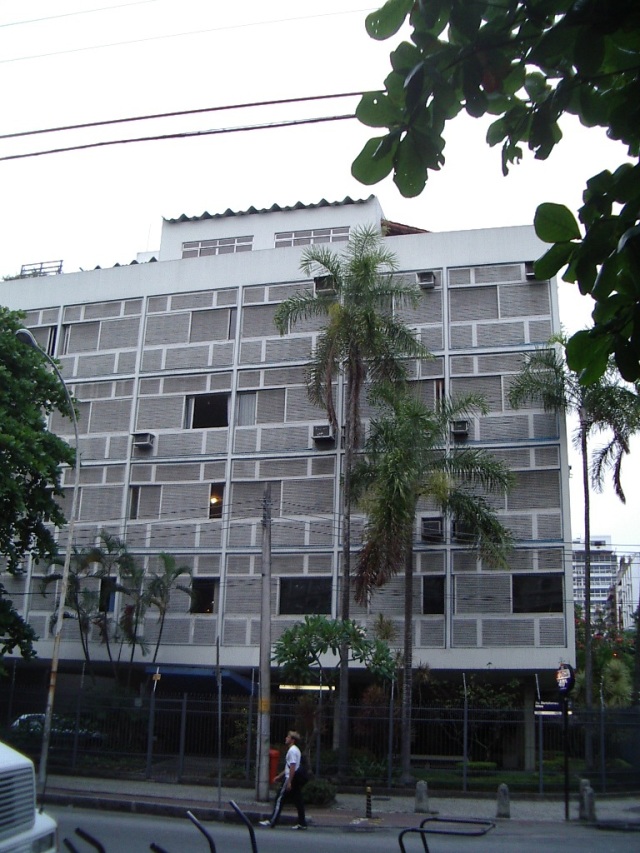
building, sao paulo, brazil (photo by author)
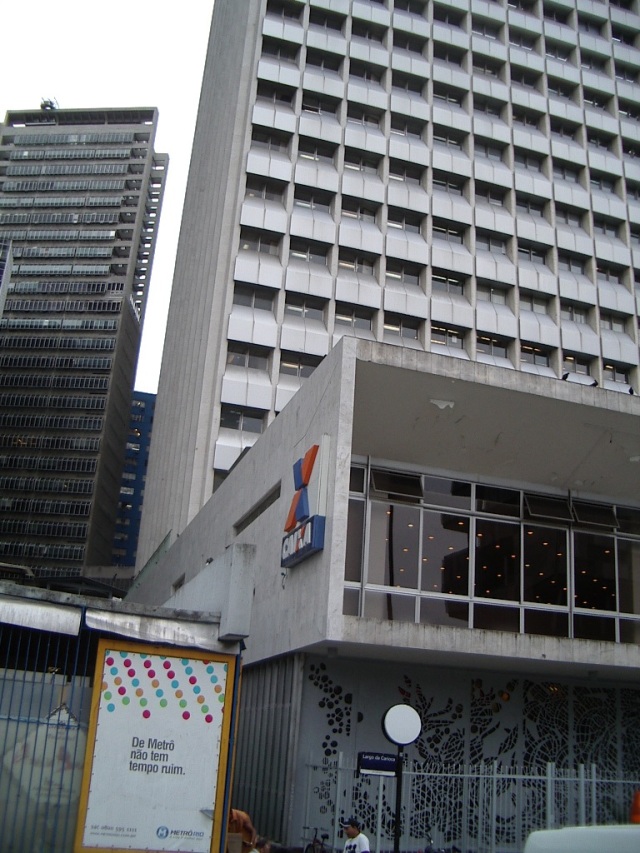
office building, rio de janeiro, brazil (photo by author)
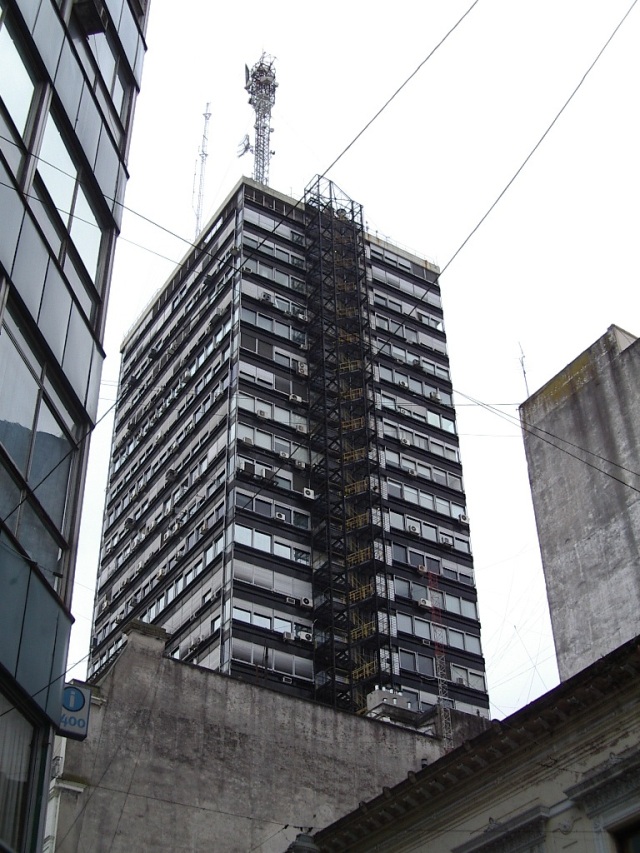
offcie building, buenos aires, argentina (photo by author)
the concept of utopia is intrinsic to the study of the future.
the impossibility of utopia, though is mired in the intrinsically large gulf between our ability to conceive, logically, a perfect world, and to actualize the reality that would be necessary for that perfect world to exist. instead we are constantly faced with the all too human sense of defeat in the struggle towards perfection.
moments of perfection, though, can be realized… but often are clouded mysteries when viewed from everyday life. the action of engaging with pure forms of logic in built form naturally requires this ability to construct the context within which the logic was attempting to act. in other words, like a crime scene, one must engage with the physical artifacts to reconstruct the logic that lead to the observed outcome. whether we would like to admit it, we are all actors engaging with utopia…from the developer creating endless tract housing in suburbia, the military industrial engineering firms increasing the size and scale of our defense infrastructure, the avant-garde architect creating a culturally important icon to redefine a city, or the lay architect toiling on kitchen renovations and architectural additions. The act of engaging utopia is one that is partaken by clients, financiers, designers, developers, and engineers, but is seldom looked at within that light.
in the end the concept of utopia usually only holds when it is based on a logic most at odds with the current arc of the logics that surround it, the logics that lay it on the line. that oppose the current state of being. and with good reason. these are the utopian acts that attempt to create a new order, to critique what exists, and transform our expectations.
and since, like any other human act, they are always weighted by a particular sense of blindness to the totality of their outcome, are as much experiment as known quantity, they fail to some extent. and become part of the string of engagements with current society that have good outcome as well as bad.
in the end you cannot say there is any human endeavour that can be guaranteed to be a success. to represent no possibility of failure. to not become another form of dispossessed utopia. it is unjust to believe this can exist.
but at the same time, we must constantly attempt to find new ways to succeed in putting forth new modes of living that attempt to undue past failures. and so the cycle is created, the need for innovation, the inability to just look back.
herein lies the crisis and the opportunity. sadly, as much as i would wish that as an agent of innovation, i could engage with everything holistically. in a manner that would allow me to understand all possible outcomes….it is not the nature of creative acts to be completely holistic. instead it is through a focus on a set of issues that solutions come to light and can be truly expressed. and even in as much as this focus can lend solutions, it also does not mean that in the future we can expect this solution to work, and in all circumstances. such is the knowledge of our post-globalized world that there are no constant truths. no completely transferable solution.
but this post is not meant to be discouraging or halting toward the act of innovation. it is meant to give context to what is typically discussed as a context-less act. the engagement with utopia requires an understanding of just how pervasive a concept it is. i would sadly say it is the very logic that puts us where we are, whether that utopia is purely to make money for a private investor, to change the concept of cultural space, or just change the way in which someone lives on a daily basis. and so i’d like to just begin engaging with the phantom itself in this site. what dialogue will we have? where will it lead?
this dialogue with the phantom of the future?
cardinal sin
 video stills from Lifecycle by Brian Bowman
video stills from Lifecycle by Brian Bowman
i’ve committed the cardinal sin of blogging and not updated my blog for a week. so instead of whining about my workload i’ll share a video from a good friend, brian levi bowman. we collaborated a few years ago on an animation project that explored projecting a future based on leisure. future projection has become a running theme for both of us and we explore it in different ways. see his latest video that explores the future of memorialization.
Lifecycle from Brian Levi Bowman on Vimeo.
the beautiful thing here is how he takes the concept of memorialization and explores it via a future projection in two divergent manners. one via the act of reproduction, secondly through considering one’s own death. these two meditations not only develop from our own inherent narcissism as human beings but also engage in an architectural narrative that explores the evocation of this narcissism within the creation of architecture and via this to a commentary on our own everyday life. the beauty of this means of exploring architecture via experiential narratives is that it places the architectural object into a reflexive position relative to the inhabitant or viewer. the architecture exists both as physical object as well as commentative device. this form of ironic relationship of the object to its own critique is one that i have grappled with on many occasions as well, the idea that in creating something you have to consider and celebrate it’s weakness to create a resonant power for it’s role as participant in the dialogue.
setting the scene
All the notions we thought solid, all the values of civilized life, all that made for stability in international regulations, all that made for regularity in the economy…in a word, all that tended happily to limit the uncertainty of the morrow…all this seems badly compromised. I have consulted all the augurs I could find, of every species, and I have hear only vague words, contradictory prophecies, curiously feeble assurances. Never has humanity combined so much power with so much disorder, so much anxiety with so many playthings, so much knowledge with so much uncertainty
– Paul Valery, “Historical Fact” (1932)
This statement speaks as much to our present condition as to the one in 1932, again we are faced with a terrain around us that is not quite solid.
This blog is currently being written from the city of San Francisco, a city which is built on ground that, although appearing very solid, is anything but. It is also being written by an architect, a profession which as much marked by the physicality of it’s product is moved and shaped by the unseen forces of politics, social networks, cultural values, economics, and technological advances.
To begin with, I’d like you to join me in surveying the destruction, taking stock of the damage and sorting through the rubble.

